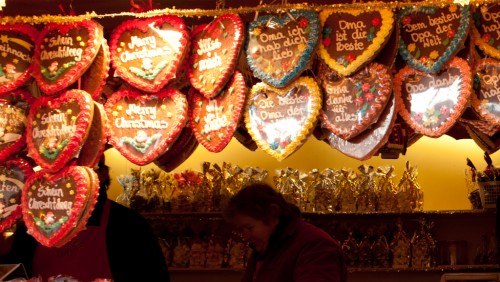‘Tis the season for Lebkuchen! This gingerbread-ish, cookie-ish sweet was invented by medieval monks in Franconia, Germany in the 13th century. The earliest known bakers were in Ulm and Nürnberger. Nürnberger won the arms race and quickly became the undisputed Lebkuchen capital of the world.
Germany’s tradition spread throughout Europe. Lebkuchen quickly morphed into spiced cakes, cookies or small loafs. Catholic monks popularized it by baking special theme cakes for saints’ days and festivals. It is generally made with spices such as aniseed, coriander, cloves, ginger and cardamom, candied citrus peel, hazelnuts, and almonds.
Traditionally, Lebkuchen was soft but a firmer version was concocted for Lebkuchen Hearts, which are covered with iced decorations, and witch houses, popularized by Hansel and Gretel.
Today, due to variations in recipes, the cakes are also known as Honigkuchen (honey cakes) or Pfefferkuchen (pepper cakes).
I’d love to hear your comments! And, if you liked this post, please share it.


No comments yet.